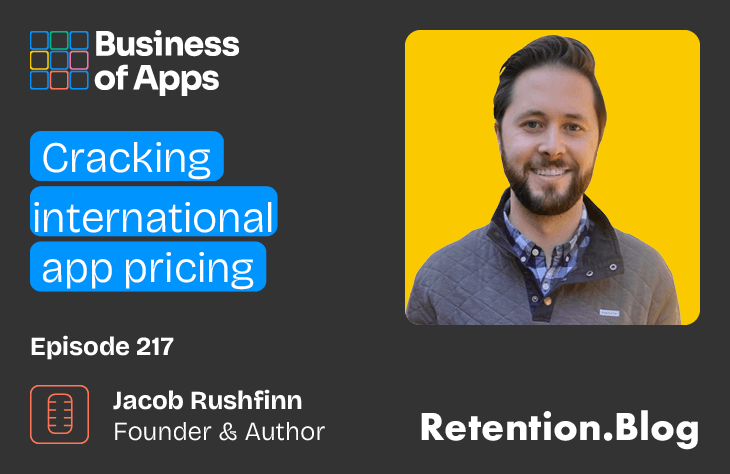
For every mobile app out there there was this moment when somebody in its team was making a decision about the app’s pricing. Coding an app isn’t easy, designing an app is not easy either but when it comes to deciding how much money you’re going to charge for an app, it is more complicated then one would think. Charging for an app copy, in-app purchase or app subscription are all not easy things to crack.
Now ask yourself – what if I want to go international with my app? How should I price my app in UK, France, Sweden, Japan, on Mars? Ok – the last one isn’t your worry, yet. Jokes aside, international app pricing can be really complicated and that’s why we have today Jacob to explain how it works.
Today’s Topics Include:
- Jacob’s background
- Common mistakes app developers make setting prices for international markets
- Building a global price index
- Developing effective pricing strategies with limited resources
- Android or iOS?
- Leaving his smartphone at home, what features would Jacob miss most?
- What features he would like to see added to his smartphone?
Links and Resources:
Quotes from Jacob Rushfinn:
“Yeah, I think the most common one is just relying on Apple and Google. So Apple and Google in App Store Connect and Play Store have give you default price recommendations or price localization. So you input your price for the country, your base data of your largest in, and then they suggest, OK, what should your price be in these other countries?
And I think people often get confused about what Apple and Google are actually saying here. We look at these prices and we think, okay, Apple and Google know best, but really what all they’re doing is saying, on the taxes and fees in those other markets, this is the price that would get you the same amount of revenue or equalized revenue across those regions. But they’re not actually optimizing and maximizing for conversions in those local markets.“
Host
Business Of Apps – connecting the app industry since 2012

